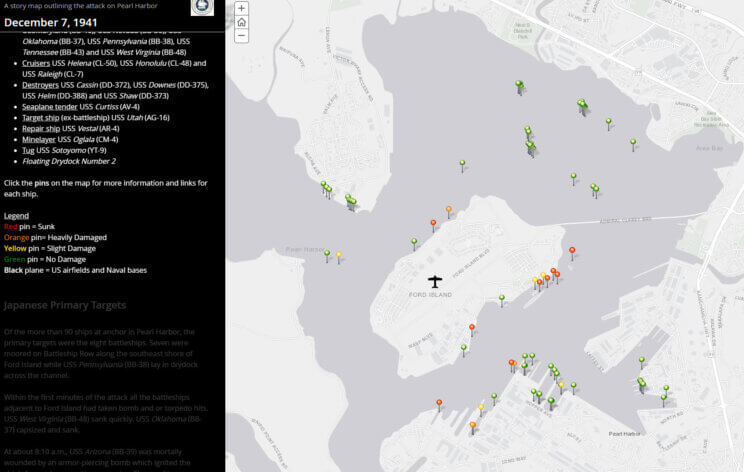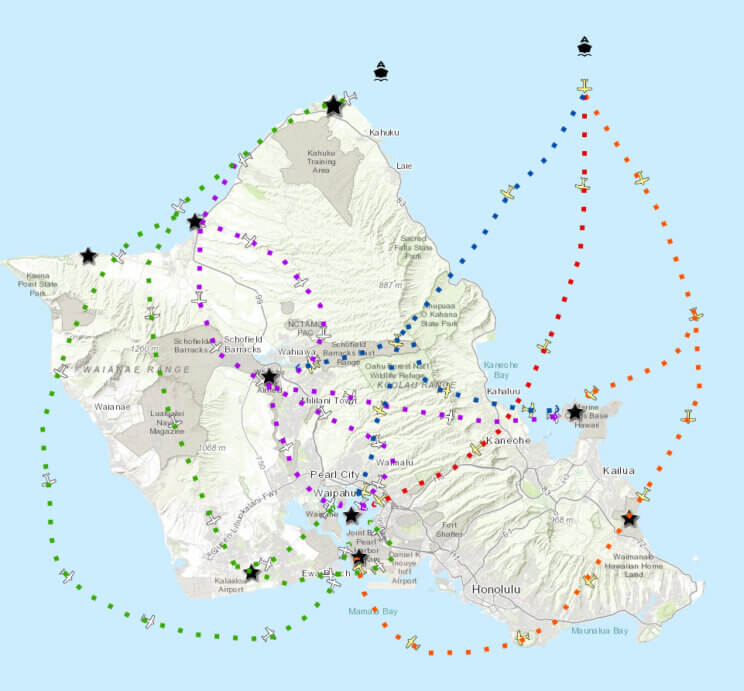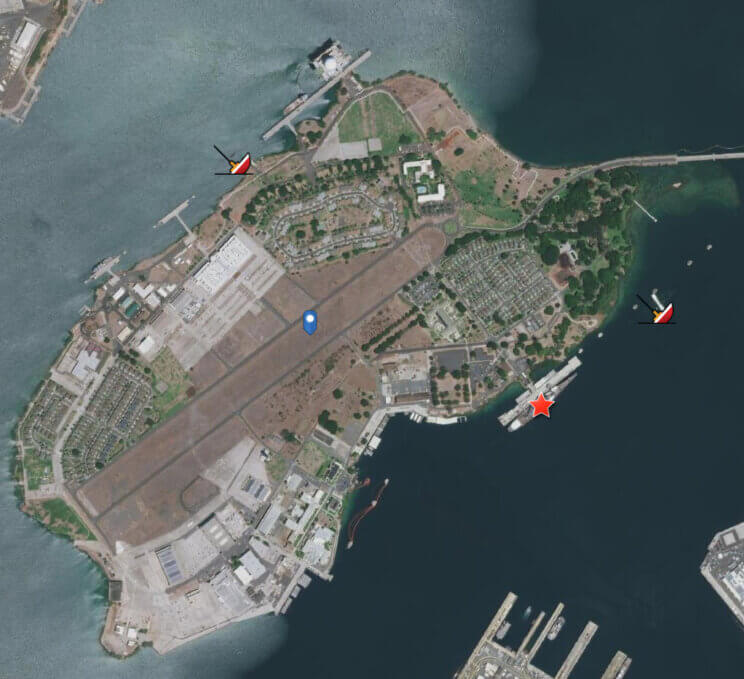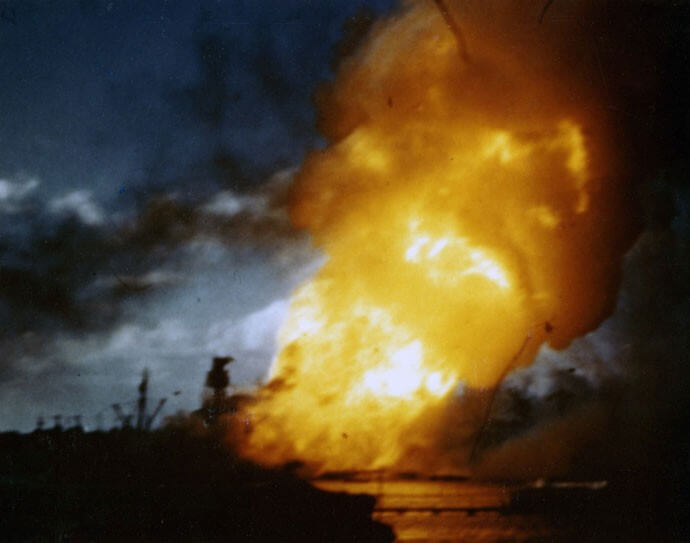World War II came to the United States of America on Sunday morning, 7 December 1941, with a massive surprise attack by the Imperial Japanese Navy.
“Like a thunderclap from a clear sky,” Japanese carrier attack planes (in both torpedo and high-level bombing roles) and bombers, supported by fighters, numbering 353 aircraft from six aircraft carriers, attacked the U.S. Pacific Fleet at Pearl Harbor in two waves, as well as nearby naval and military airfields and bases. The enemy sank five battleships and damaged three; and sank a gunnery training ship and three destroyers, damaged a heavy cruiser, three light cruisers, two destroyers, two seaplane tenders, two repair ships and a destroyer tender.
Targets and effect:


Flight Paths:
Navy, Army, and Marine Corps facilities suffered varying degrees of damage, while 188 Navy, Marine Corps, and U.S. Army Air Force planes were destroyed. Casualties amounted to: killed or missing: Navy, 2,008; Marine Corps, 109; Army, 218; civilian, 68; and wounded: Navy, 710; Marine Corps, 69; Army, 364; civilian, 35. Japanese losses amounted to fewer than 100 men and 29 planes.
Sailors, Marines, and Soldiers fought back with extraordinary courage, often at the sacrifice of their own lives. Those without weapons to fight took great risk to save wounded comrades and to save their ships. Pilots took off to engage Japanese aircraft despite the overwhelming odds. Countless acts of valor went unrecorded, as many witnesses died in the attack. Fifteen U.S. Navy personnel were awarded the Medal of Honor — ranging from seaman to rear admiral — for acts of courage above and beyond the call of duty, ten of them posthumously.

You can visit the site your self to explore the details further. It is well worth a visit.
https://nhhc.maps.arcgis.com/apps/MapJournal/index.html?appid=90ad202de59d4a5bbf70738e5737c3be
